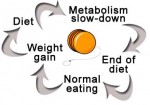 Have you been losing weight and despite staying on your diet and exercising, your weight suddenly stays the same? Don't get discouraged, it's normal for weight loss to slow down and even stop. This phenomenon is called the "weight-loss plateau" and it's more common than you think. Even the best planned weight loss program can become stalled.
Have you been losing weight and despite staying on your diet and exercising, your weight suddenly stays the same? Don't get discouraged, it's normal for weight loss to slow down and even stop. This phenomenon is called the "weight-loss plateau" and it's more common than you think. Even the best planned weight loss program can become stalled.
According to the Mayo Clinic, here's why this happens. A rapid weight loss is common during the first few weeks of a well planned diet. When calories are reduced the body gets needed energy by releasing its stores of glycogen, a type of carbohydrate stored in the liver and muscles. Glycogen holds a lot of water so when it is used up at the beginning of a diet, it also releases the water--about 4 grams per gram of glycogen, resulting in a sudden weight loss that is mostly water.
Once your diet progresses and you start burning lean muscle tissue, your metabolism slows. Metabolism is the process of converting food into energy. When you lose weight you lose fat and lean muscle and this weigh-loss changes once your metabolism slows. At this point, you need to increase your exercise or decrease your food intake if you want to lose more weight. If you continue the diet/exercise regimen you started with, you will maintain your weight but probably not continue to drop many pounds.
To get past this weight loss plateau, you need to
- Review your eating/exercise habits and be sure you haven't "cheated" along the way
- Cut more calories--try reducing your diet by 200 more calories
- Increase your workout...either in time or intensity
- Try to increase movement during the day----take stairs instead of the elevator, run your errands on foot.
- Applaud your success and make sure your goals are reasonable--just don't fall back.

 Getting regular, moderate-intensity exercise may be critically important for postmenopausal women who want to reduce their risk of cancer, heart disease and other chronic diseases, according to a study led by researchers at Fred Hutchinson Cancer Research Center in Seattle.The reason: exercise effectively reduces intra-abdominal fat, a hidden risk factor for many chronic illnesses including cancer, heart disease, and diabetes.
Getting regular, moderate-intensity exercise may be critically important for postmenopausal women who want to reduce their risk of cancer, heart disease and other chronic diseases, according to a study led by researchers at Fred Hutchinson Cancer Research Center in Seattle.The reason: exercise effectively reduces intra-abdominal fat, a hidden risk factor for many chronic illnesses including cancer, heart disease, and diabetes. Women with peripheral artery disease (PAD) lose ability to walk short distances and climb stairs sooner than men.
Women with peripheral artery disease (PAD) lose ability to walk short distances and climb stairs sooner than men.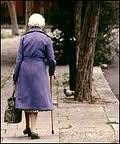
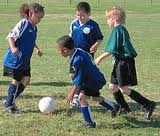 According to a new study to be published in the January 2011 issue of the
According to a new study to be published in the January 2011 issue of the  People will gain significantly less weight by middle age – especially women – if they engage in moderate to vigorous activity nearly every day of the week starting as young adults, according to new Northwestern Medicine research.
People will gain significantly less weight by middle age – especially women – if they engage in moderate to vigorous activity nearly every day of the week starting as young adults, according to new Northwestern Medicine research. I just got back from a brief vacation in the Italian region of Emilia Romagna--the land of Parma ham, proscuitto, Pasta Bolognese and tasty hard cheeses. One of the regional specialties is a ravioli filled with spinach and ricotta covered in a butter sauce and sprinkled with parmesan cheese (Are your arteries choking yet?). I was immediately struck by the lack of overweight people despite these wonderful foods that are high in fat and quite salty. What is it about Italy that allows people to stay thin, yet eat these rich foods?
I just got back from a brief vacation in the Italian region of Emilia Romagna--the land of Parma ham, proscuitto, Pasta Bolognese and tasty hard cheeses. One of the regional specialties is a ravioli filled with spinach and ricotta covered in a butter sauce and sprinkled with parmesan cheese (Are your arteries choking yet?). I was immediately struck by the lack of overweight people despite these wonderful foods that are high in fat and quite salty. What is it about Italy that allows people to stay thin, yet eat these rich foods? The millions of middle-aged and older adults who suffer from insomnia have a new drug-free prescription for a more restful night’s sleep. Regular aerobic exercise improves the quality of sleep, mood and vitality, according to a small but significant new study from Northwestern Medicine and the Feinberg School of Medicine. Insomnia is more prevalent in women.
The millions of middle-aged and older adults who suffer from insomnia have a new drug-free prescription for a more restful night’s sleep. Regular aerobic exercise improves the quality of sleep, mood and vitality, according to a small but significant new study from Northwestern Medicine and the Feinberg School of Medicine. Insomnia is more prevalent in women.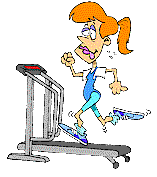 Weight gain during menopause continues to be a challenge to women. About 30% of women aged 50-59 are not just overweight, but obese. This weight gain increases one's risk for high blood pressure, heart disease, and diabetes. Just when we are getting used to the other symptoms often associated with menopause (hot flashes, insomnia, etc), we now have to worry about other serious chronic diseases! It's hard not to say, "aging is not for sissies".
Weight gain during menopause continues to be a challenge to women. About 30% of women aged 50-59 are not just overweight, but obese. This weight gain increases one's risk for high blood pressure, heart disease, and diabetes. Just when we are getting used to the other symptoms often associated with menopause (hot flashes, insomnia, etc), we now have to worry about other serious chronic diseases! It's hard not to say, "aging is not for sissies".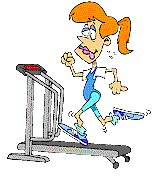 Women who measure their peak heart rates for exercise will need to do some new math, as will physicians giving stress tests to patients. A new formula based on a large study from Northwestern Medicine provides a more accurate estimate of the peak heart rate a healthy woman should attain during exercise. It also will more accurately predict the risk of heart-related death during a stress test.
Women who measure their peak heart rates for exercise will need to do some new math, as will physicians giving stress tests to patients. A new formula based on a large study from Northwestern Medicine provides a more accurate estimate of the peak heart rate a healthy woman should attain during exercise. It also will more accurately predict the risk of heart-related death during a stress test.